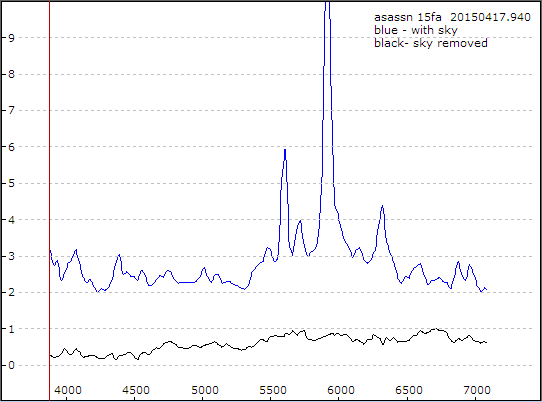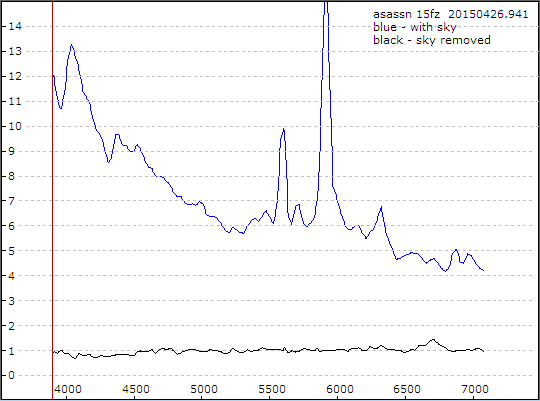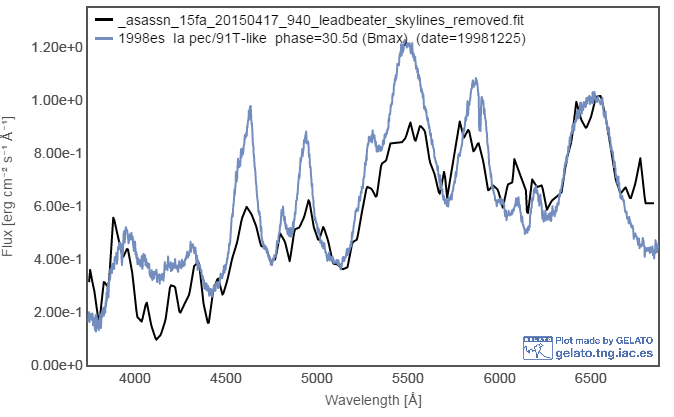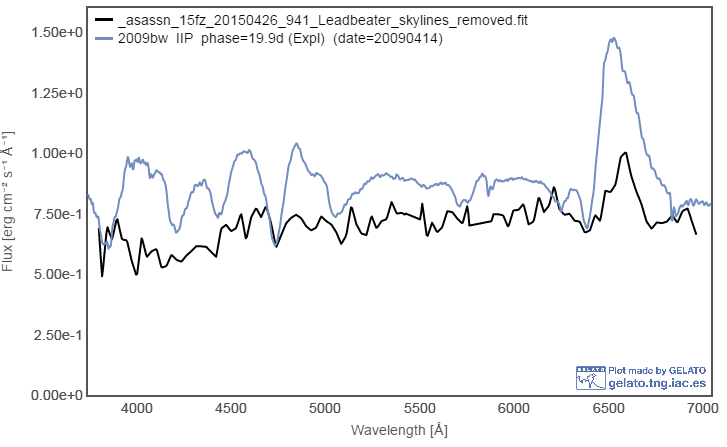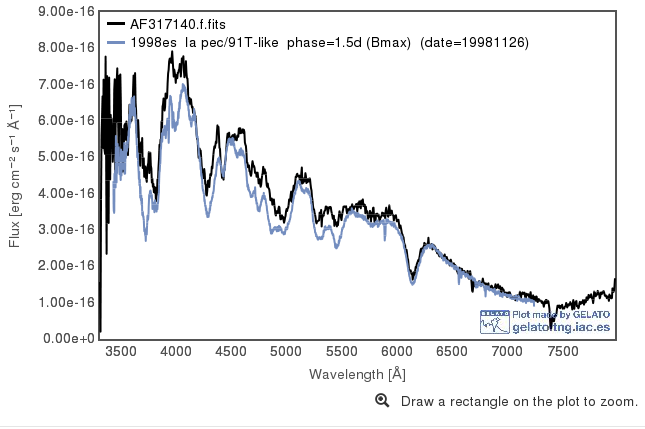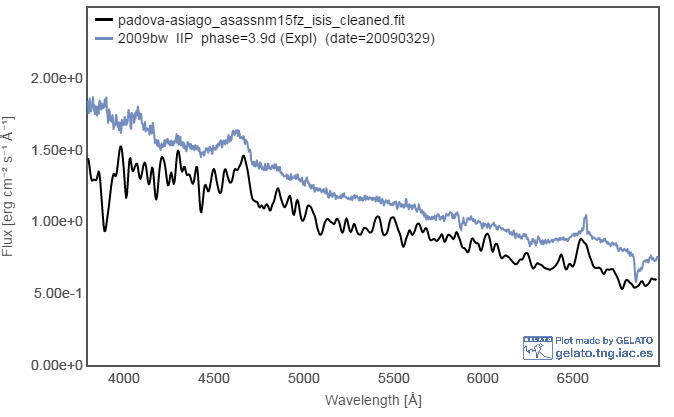ASASSN 15fa in NGC 6319
ASASSN 15fa was discovered by the All Sky Automated Survey for Supernovae on 2015-03-17 (ATel 7245) and identified from a spectrum taken by the Asiago Transient Classification Program as a type 1a supernova (ATel 7253).
An R~100 spectrum was taken using the ALPY 200 at THO on 2105-04-17 at ~ mag 17.5
ASASSN 15fz in NGC 5227
ASASSN 15fz was discovered by the All Sky Automated Survey for Supernovae on 2015-03-31 (ATel 7320) and identified from a spectrum taken by the Asiago Transient Classification Program as a young type II supernova (ATel 7323).
An R~100 spectrum was taken using the ALPY 200 at THO on 2105-04-26 at ~ mag 17.5
Guide camera image (15x20sec)
Guide camera image (40x20sec)
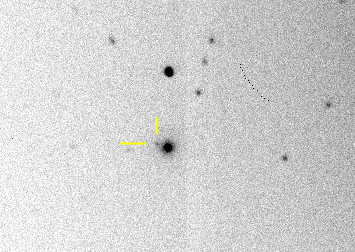
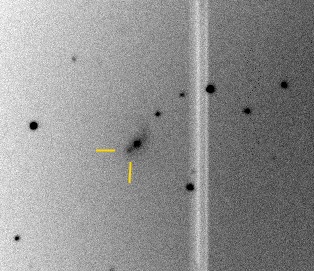
Raw spectrum image (6x1200sec)
Raw spectrum image (6x1200sec)
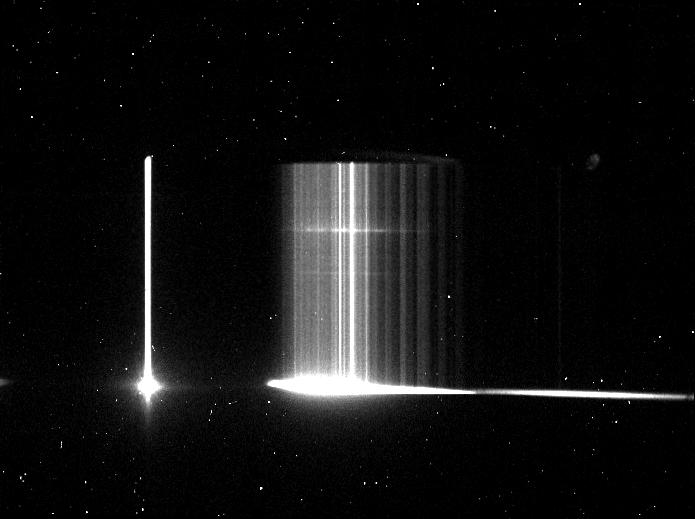
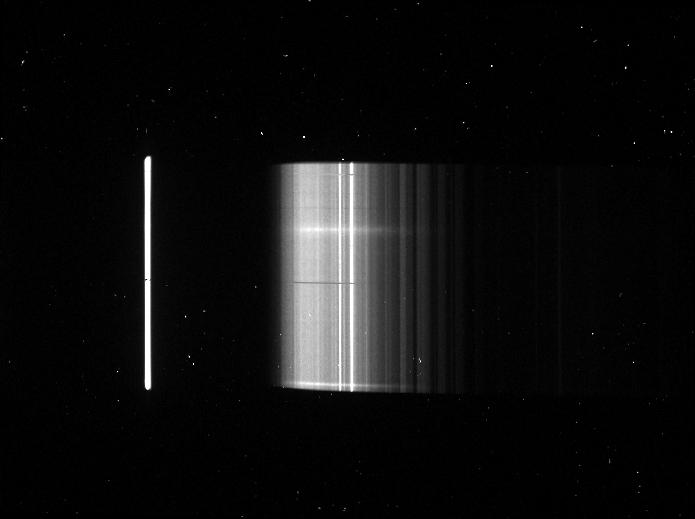
Recorded at an altitude of 60 deg. The SN spectrum is ~1/3 from the top of the slit. The bright line on the left is the zero order. The spectrum at the bottom is the edge of a " bright" (~mag 11 ) star caught in the slit. (Note the OH molecular airglow bands in the IR)
Recorded at an altitude of 35 deg with gibbous moon. The SN spectrum is ~1/3 from the top of the slit. The bright line on the left is the zero order. (Note the high sky continuum, particularly in the blue, from the moonlight )
Calibrated spectra with and without sky background
Calibrated spectra with and without sky background
